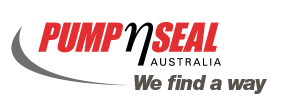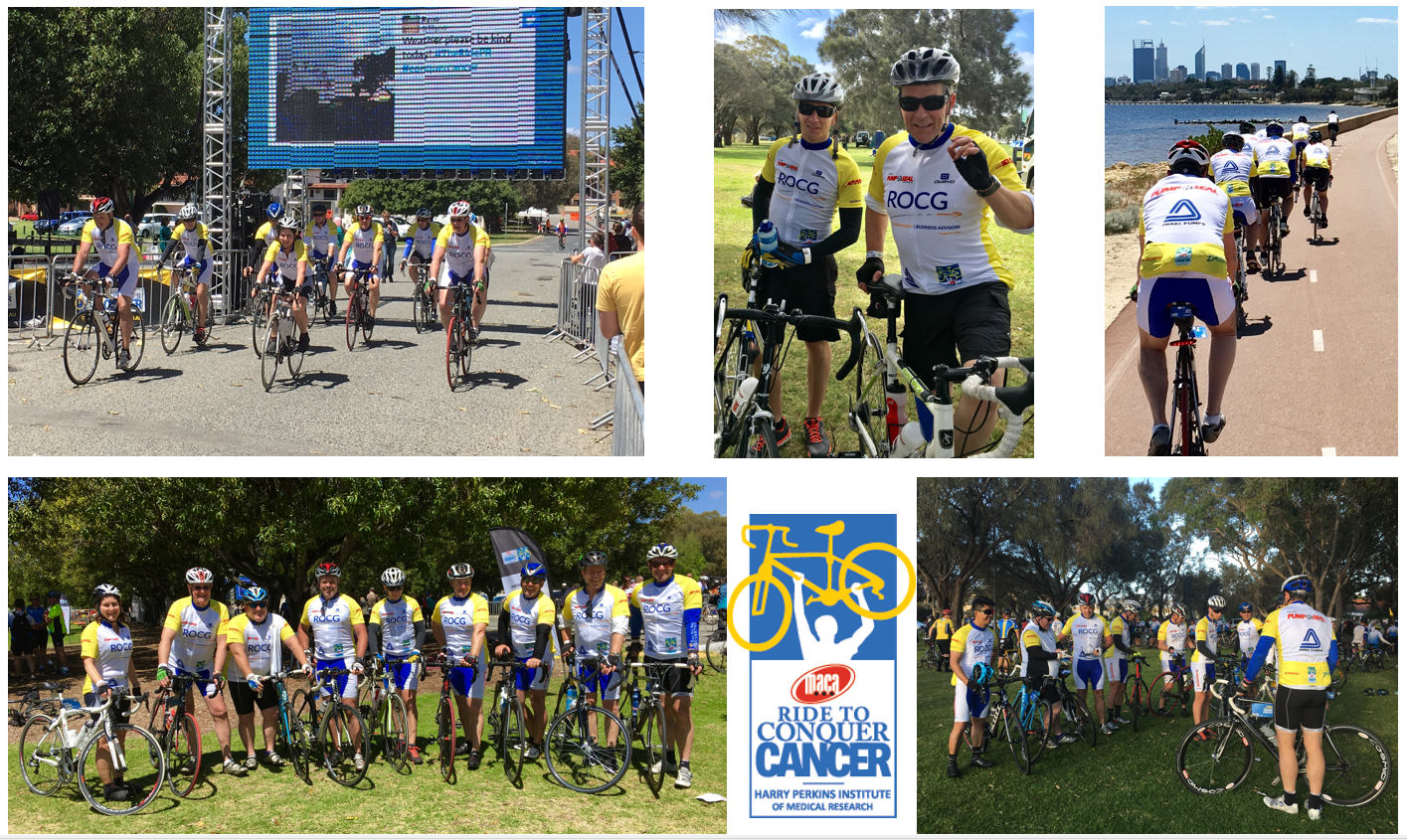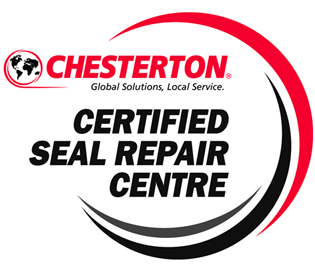Not only is PUMPNSEAL’s New Pump Application Engineer Matt Prestage an expert with years of experience in the pump industry, he is also an adrenaline junky and world traveller who has been to the ends of the earth in search of excitement and new experiences. In search of adrenaline closer to home, he has started downhill mountain biking in the last couple of years and on the weekends he likes to head out to Kalamunda/Pemberton/Margaret River to ride the mountain bike trails. Matt and a few others have started their own mountain bike “team” called the “downhill dingoes” which now has 12 members. When travelling the globe last year Matt met up with a few mates and attempted to ride some of the Rebull Rampage sites in Utah, USA. This was extremely challenging and these locations were nearly impossible to climb, let alone ride down. This new hobby has definitely had its ups and downs with damaged equipment and broken bones. Matt brings this enthusiasm and attitude to his daily work at PUMPNSEAL.
Author Archives: Gavin Brown
Our 2018 calendar will be going to print shortly and once again we would love our customers and staff to vie for the prestigious title of “PUMPNSEAL Photographer Extraordinaire”. If you have taken a terrific WA Coastal photo worthy of featuring on our calendar…you could win a case of fine WA Wine, as well as the applause and plaudits of your peers in the industry.
The competition is simple:
Photo is to feature the WA coast line.
Email a medium resolution image in Landscape format (less than 2mb for judging purposes), along with details on how you took the photo and with what equipment
The Grand Prize … Apart from some extra copies of our calendar to share with family and friends, a case of fine WA wine and credit on the calendar for you, the photographer.
Submissions are to be received no later than close of business, Friday 28th July, 2017
Judges decision is final!
Email your entry to: marketing@pumpnseal.com
At a remote airstrip in Albany recently, PUMPNSEAL Senior Sales Engineer, Matt Wood, put his speed to the test. RACEWARS is an event for car enthusiasts to test the limits of their much-modified vehicles. In most cases PUMPNSEAL work with figures of litres per second and metres of head, but in this instance, Matt’s 1970 “Super Roo” XW Falcon managed a top speed of 241km/hr(old school = 149.75mph) over the 1000m Vmax challenge and still had some legs left in the old Ford.
Quickest on the day was John Kopcheff who recorded an incredible maximum speed of 324.97km/h (201.93 mph) from a standing start. Incredibly, he actually drove his 2011 Lamborghini LP1600-4 twin-turbo Gallardo to the event from the other side of Australia. One second slower was a vanilla looking 2002 VT Commodore which reached 188mph. Maybe the parachute on the back was a giveaway that all was not standard?
For more details check out the video from inside Matt’s car .
PUMPNSEAL Australia together with CHESTERTON Global Learning Services invite you to attend our Stationary Sealing Seminar.
Suitable for Mechanical Engineers, Mechanical Supervisors, Reliability Engineers, Offsite Repair Co-ordinators.
Our Presenter, Ron Frisard, is a Mechanical Engineer who has worked for the AW Chesterton Company for the last 27 years in all facets of Mechanical Packing. Some of his accomplishments include developing the simplified valve live loading system, creating a 24/7 data acquisition pump packing test stand, and innovating the pricing model for braided packing by the box. He has held positions in application engineering, research & development, as well as global training, and is now responsible for Chesterton’s Valve packing, pump packing and gasketing marketing, including product line management and new product introduction.
Ron has presented at many conferences including the Electric Power Research Institute, the American Society of Mechanical Engineers and Valve World in Europe & the US. He has had articles published on valve, pump, and flange sealing including such topics as hot bolting, emissions valve packing and pump packing installation best practices. In addition, he is active in software development with many programs to his credit including valve packing management software, data acquisition programs and IOS app development.
Ron is currently the Vice Chair for both the Packing and Gasketing divisions of the Fluid Sealing Association (FSA).
Topics to be covered include:
- Valve Emissions Sealing
- Global changes to Emissions leakage
- Accurate measuring of valve dimensions
- Observing valve issues that could hinder sealing
- Installation of Packing
- Torque and bolting considerations for Low E sealing
- Consolidation of Packing
- Multi-discipline continuous improvement program focusing on root causes of packing failures.
Flange Sealing Overview
- Considerations of bolted Flange Joint Connections
- Forces on the Gasket
- Elastic Curve for Bolting
- Flange Sealing Prospective
- Thermal Gap
- Flange Springs
- Hot Re-torquing dangers
Good Bolting Overview
- Flange & bolt inspection
- Flange conditions
- Torque patterns
- Anti-seize and K factor
- Alignment
- Flange rotation
By Jim Drago & Ron Frisard
Safety is a concern at any industrial site. An Occupational Safety and Health Administration compliance specialist has stated that safety should be more than a priority: “Priorities in an organization can and usually do change. Safety and health need to be a core value of the organization.”1
Safety can be a case of values versus priorities. When it comes to sealing devices, perceived dangers sometimes are overlooked. The case of an explosion at a refinery in Anacortes, Washington, shows how deadly accidents can occur when safety risks are distorted.
A heat exchanger, known as E-6600E, catastrophically ruptured at the Tesoro refinery in Anacortes on April 2, 2010 (see Image 1). Highly flammable hydrogen and naphtha at more than 500 F were released from the ruptured heat exchanger and ignited, causing an explosion and an intense fire that burned for more than three hours. The rupture fatally injured seven Tesoro employees (one shift supervisor and six operators) working near the heat exchanger.
The Anacortes incident has been reviewed by many organizations, including the Chemical Safety Board (CSB), which released a 160-page report.2 Acceptance of a non-safety-focused culture is one of the major points made in the CSB report. This accident and the CSB report illuminate many lessons regarding how engineers and maintenance personnel should look at flange leakage and use sealing technology correctly. The Fluid Sealing Association’s focus is to assist in educating the industry in sealing technology to create a safer working environment.
E-6600E’s flanges had been leaking for many years before the accident. As stated in the CSB report, “The NHT heat exchangers frequently leaked flammable hydrocarbons during startup, sometimes resulting in fires … management had been complacent about these hazardous leaks and did not always investigate the cause of the leaks.”
The report discusses how the corrective action process failed to resolve these problems. Actions included the use of steam lances to spray on the leaking flanges during startup to mitigate fires. This required additional personnel near the NHT heat exchanger. Another action was to increase the heat to lessen the heat-up time of the heat exchanger—a contributing factor to the rupture. The use of clamps and active leak repair can mask the underlying sealing problem.
The leakage of these flanges was a technical issue of engineering design, maintenance and sealing devices. The plant sporadically attempted to prevent leaking of the NHT heat exchangers. These attempts included: gasket modifications; changes to torque and bolting practices; resurfacing of flange surfaces; and the installation of warm-up piping to smooth the equipment’s transition from cold to hot during heat exchanger startup.
After several severe leaks from the heat exchangers during a March 2009 startup, the plant installed a different type of gasket in August. During the startup that followed, records indicate that no leaks from the heat exchangers occurred. The problem reappeared during the next cycle, and one possible reason was the reuse of the gasket.
Despite published industry best practices that require use of new heat exchanger gaskets after change out, documents indicate that the new heat exchanger gaskets could be reused after flange disassembly at subsequent cleaning cycles. This exemplifies lack of knowledge in sealing devices by not following gasket manufacturer and industry best practice guidance that gaskets should never be reused.
The information may have come from the gasket distributor, which might have had a lack of knowledge. (The Fluid Sealing Association has a gasket manual available at fluidsealing.com.)
Avoid Gasket Reuse
Why should a gasket not be reused? First, when gaskets are installed they are compressed and take a permanent set. The gasket’s whole design is to conform to the flange face and seal. If the gasket were 100 percent elastic—such as with homogeneous rubber sheet and molded parts used at ambient temperature and not exposed to elevated temperature—reuse would not be such an issue.
When a sheet gasket made of compressed fibers, inert fillers with rubber binders or polytetrafluoroethylene (PTFE), or metal with flexible graphite filler/laminate is compressed, it is irreversibly densified. When the compressive load is released, it does not return to its original shape. It will not seal under the same assembly conditions as it did when first installed.
Second, heat changes the gasket material’s form and properties. Heat will cure and harden gasket materials that contain rubber. At elevated temperatures, the metal used in 100 percent metal and composite metal gaskets can be subject to the reduction of their yield point. Elevated temperature will alter stress versus strain characteristics, taking the material out of the elastic region—causing permanent deformation and a reduction or elimination of resilience.
Understand Thermal Growth
Thermal growth rate differences of head flanges, tube-sheets, bolts and gaskets create an upset of the gasket-flange interface and a loss of seating stress on the gasket that can cause flanges to leak. As the equipment heats, the exchanger flanges’ faces grow axially and radially. Axial growth causes compressive stresses on the gasket beyond what was provided by the bolt pre-load. Because the flanges and gasket are made of different material, the rates of thermal expansion are different.
Radial growth causes the flange surfaces to wipe across the gasket, upsetting the gasket-flange interface and potentially causing leak paths. Some gaskets, such as corrugated metal with flexible graphite laminates, handle this service better than others. A test developed by the now-defunct Tightness Testing and Research Laboratory of the Polytechnique Montréal included an evaluation to address this called the Radial Shear Test (RAST). Another technology (flange springs) could have been used to give more travel during this time that could have kept a larger seating stress on the gasket.
The 2010 explosion at Anacortes was not directly caused by poor gasket application. The NHT heat exchanger vessel ruptured and caused the fire because of the vessel material’s high temperature hydrogen attack, which is metal deterioration from high temperature hydrogen contact. Because of safety complacency that accepted heat exchanger leaks during startup, additional personnel were required to manage those leaks, which led to the tragic loss of life. Technology and know-how are available to assure safe sealing that can make sure everyone safely ends the work day.
References
- “OSHA Update,” presentation given to the Monroe Professional Engineers Society on Sept. 27, 2016, by Gordon DeLeys, OSHA Compliance Assistance Specialist
- Report can be downloaded at the U.S. Chemical Safety Board website: http://www.csb.gov/tesoro-refinery-fatal-explosion-and-fire/
PUMPNSEAL Australia are pleased to announce our move to bigger and better premises!
At a time when most businesses have been tightening their belts, PUMPNSEAL Australia have been investing in the future. Our new building increases our workshop capacity three times over! In addition we have invested in additional technicians, improved equipment, including 10T Crane, faster communications and a training facility.
WE FOUND A WAY! In true PUMPNSEAL style, we took possession, gutted and fitout the new building in just 30 days (along with a little help from the teams at TKO Fitouts, Bosnar Engineering and Eilbeck Cranes).
We would like to express our thanks to all of our customers and supporters for your patience during this time, and look forward to inviting you to an Open Day early in 2017.
Last month PUMPNSEAL Australia put together a team of 11 riders to participate in the MACA Ride to Conquer Cancer. They each rode more than 200kms over two days, from South Perth to Mandurah and back. Conditions were terrible on the first day, riding into 35km/hr winds, rain, and even hail! Thankfully the ride back was far more enjoyable for them all.
We are extremely proud to announce that PUMPNSEAL were in the top 10 corporate fundraisers in an event that saw over $4 million raised for cancer research at the Harry Perkins Institute of Medical Research.
We take the opportunity to acknowledge and thank our sponsors:
• AW Chesterton
• IWAKI Australia
• ROCG Insight Business partners
• DHL Express
We extend a huge THANKYOU to all of our riders, supporters and everyone who contributed to this tremendous success! Special thanks to Tony McKenna (Anglo Gold Ashanti), John Carrigg (CKA Risk Solutions) and Jeff Tonkes (MRD Fulton Hogan) for being part our team.
We are pleased to announce that PUMPNSEAL Australia Pty Ltd is now accredited as an official Mechanical Seal Repair and Rebuild Centre by the AW Chesterton Company.
This much sought after accreditation for our Seal Repair Centre is only given to those businesses offering a high level of excellence in both process and service. The rigorous certification process involves sourcing required equipment, training personnel and access to drawings and standards as well as maintaining dedicated clean room facilities. It requires the demonstration of adherence to systems and processes to ensure seals are repaired and tested to industry standards.
A Chesterton Certified Seal Repair Centre must also have the capability to repair other major seal brands and to ensure a complete offering of repair, exchange and replacement.
The Process
Cleaning and decontamination of the seals and parts from a wide range of industries and equipment.
Seals are stripped down and the parts measured, photographed and checked for suitability to be reused or remanufactured.
The customer is provided with a report indicating the scope of work required and, if possible, reasons for the failure, and a formal quotation for approval.
After approval is received, the replacement parts are sorted and the remanufactured components are then worked on to bring them back to standard.
Faces are lapped, and all seals, gaskets, O rings and hardware are replaced and installed.
All seals are tested and a certificate is issued with the final product. The completed seal is then packaged and prepared for shipment.
Want to find out more?
PUMPNSEAL Australia have a field-based, fully trained, technical team who are available to assist. Our team specialise in troubleshooting and finding ways to run your seals and associated equipment to ensure maximum life. We are backed by the vast and comprehensive Chesterton network of global engineers and technicians.
PUMPNSEAL Australia
Experts in Seal Repair, Installation and Maintenance
We also offer New Pumps and Repair your old ones – Better than New!
















